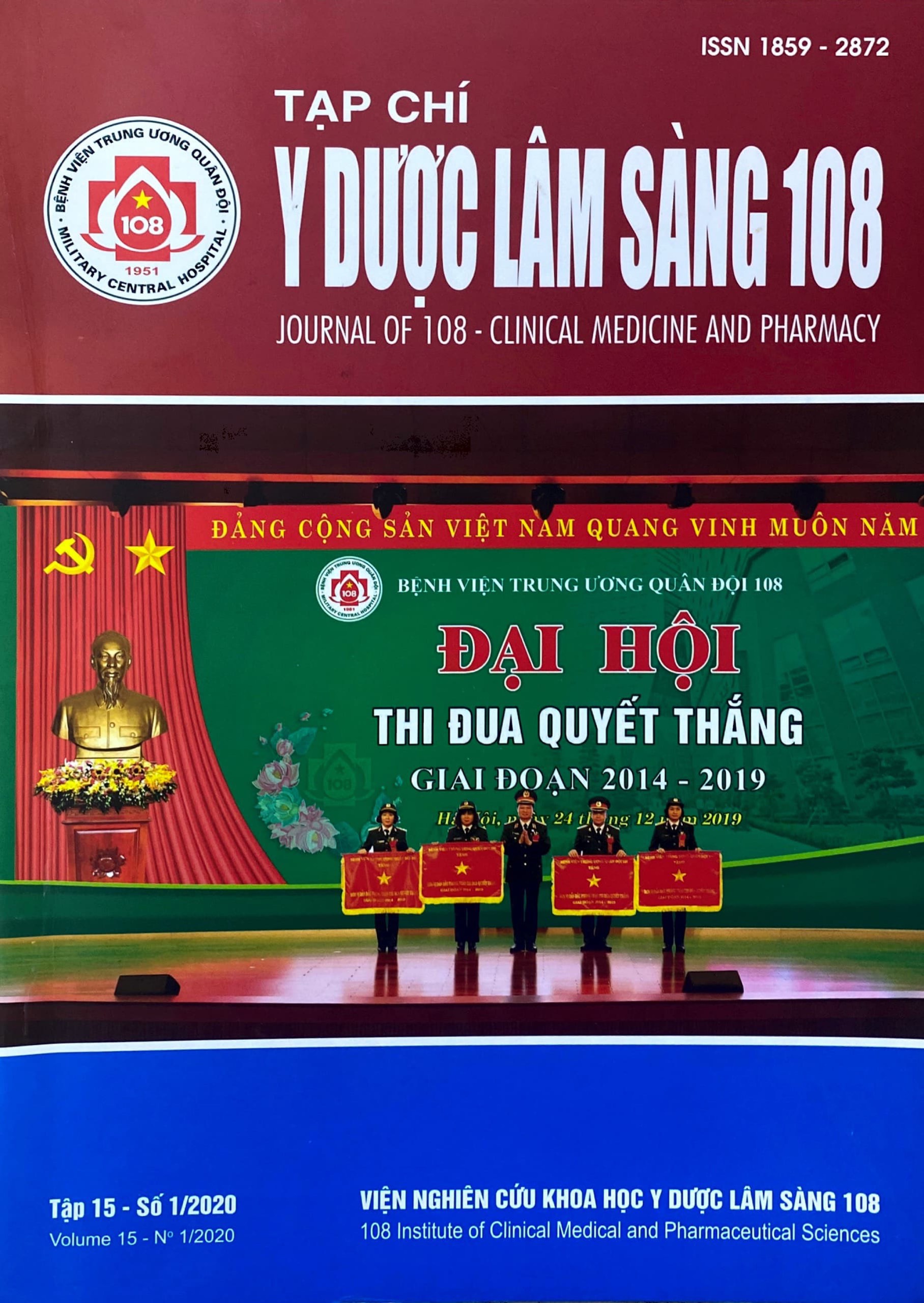Comparison of the efficacy of matricectomy with CO2 laser and phenol 88% in the treatment of ingrown toenails
Main Article Content
Keywords
Abstract
Objective: To compare the efficacy of matricectomy with CO2 laser and with phenol 88% in the treatment of ingrown toenails. Subject and method: Randomized controlled trial with 78 ingrown toenails in 72 patients in Hospital of Dermato-Venereology of Ho Chi Minh City from September 2018 to June 2019. 78 ingrown toenails were divided randomly into two groups with 39 nails on each group. Two groups underwent partial nail plate removal surgery with scissors then matricectomy with CO2 laser in group 1 and with phenol 88% in group 2. Both group used cefpodoxime 200mg twice daily for 7 days. Results were evaluated after treatment for 1 month, 3 months and 6 months. The clinical trial protocol was approved by the Ethics Council of Ho Chi Minh City Hospital of Dermato-Venereology. Data were analyzed in Stata 21.0. Result: Age ranged from 16 to 60 years, group of 18 - 30 years old accounted for the majority (58.33%) with 51.39% female. The distribution of the severity of ingrown toenails was not different between two groups. The successful rate after 6 months in both groups was 89.74%. There was no complication in both group. Recurrence occurred in one case with CO2 laser treatment. Conclusion: The two treatment methods are equally safe and effective with side effects were negligible.
Article Details
References
2. Trần Công Duyệt, Hà Viết Hiền, Vũ Công Lập (2008) Phân huỷ quang nhiệt chọn lọc trong ngoại khoa thẩm mỹ. Nhà xuất bản Y học Thành phố Hồ Chí Minh, tr. 151-160.
3. AlGhamdi KM, Khurram H et al (2014) Nail tube splinting method versus lateral nail avulsion with phenol matricectomy: A prospective randomized comparative clinical trial for ingrown toenail treatment. Dermatol Surgery 40(11): 1214-1220.
4. Benjamin IT, Amaefula TE (2017) Ingrown toe nail as seen in Bayelsa state Nigeria. International Journal of Advances in Medicine Benjamin 4(3): 614-619.
5. Bostanci S, Ekmekc¸Iç P et al (2001) Chemical matricectomy with phenol for the treatment of ingrowing toenail: A review of the literature and follow-up of 172 treated patients. Acta Dermato Venereologica 81: 181-183.
6. Karaca N, Dereli T (2012) Treatment of ingrown toenail with proximolateral matrix partial excision and matrix phenolization. Annal of Family Medicine 10(6): 556-559.
7. Lin YC, Su HY et al (2002) A surgical approach to ingrown nail: Partial matricectomy using CO2 laser. Dermatol Surgery 28(7): 578-580.
8. Sajj Muhammad, Asahraf F (2007) Ingrowing toe nail. Pakistan Journal Of Medical Sciences 23(1): 150-151.
9. Serour F et al (2002) Recurrent ingrown big toenails are efficiently treated by CO2 laser. Dermatologic Surgery 28(6): 509-512.
10. Vaccari S, Dika E et al (2010) Partial excision of matrix and Phenolic ablation for the treatment of ingrowing toenail: A 36-month follow-up of 197 treated patients. Dermatologic Surgery 36(8): 1288-1293.
 ISSN: 1859 - 2872
ISSN: 1859 - 2872
